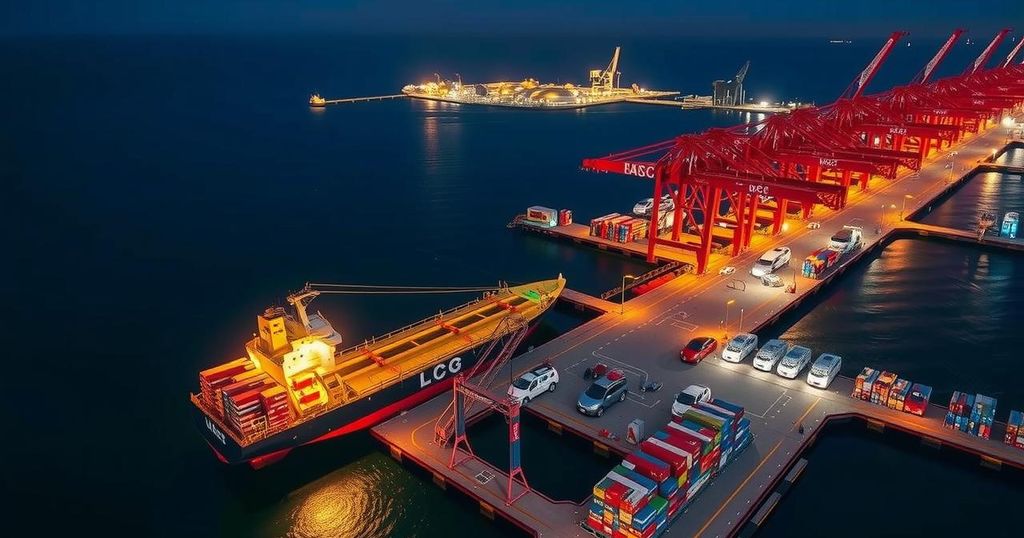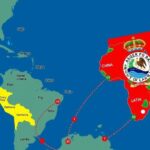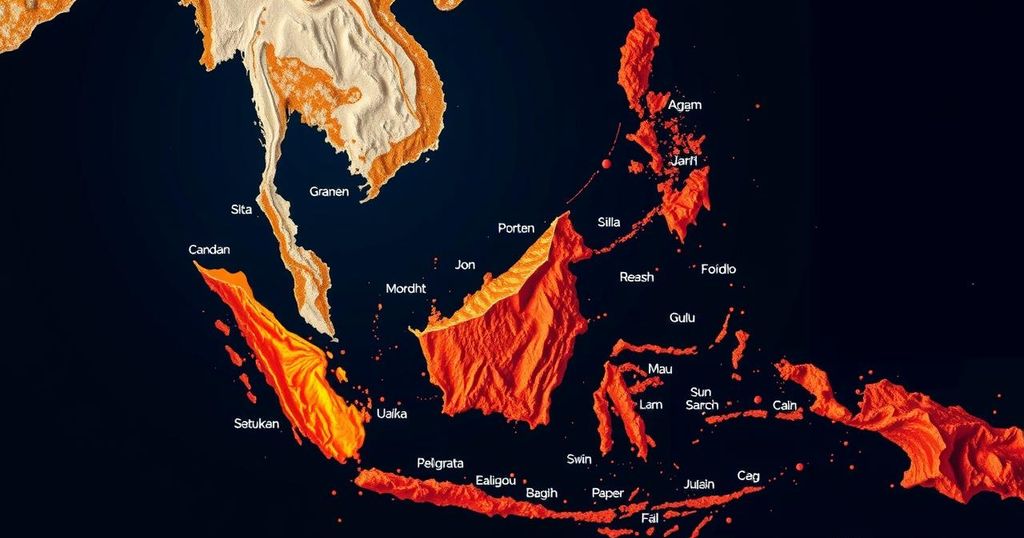Arica Port Sheds Light on Bolivian Cocaine Trafficking Operations
The seizure of 43 tons of sodium carbonate at Chile’s Arica port signals its increasing role as a trafficking point for Bolivian drugs. False declaration of precursor chemicals, combined with historical treaties and customs regulations, facilitates drug operations. The need for stronger regulatory measures is evident as drug trafficking activities intensify.
The recent seizure of 43 metric tons of sodium carbonate at Chile’s Arica port highlights the port’s evolving significance as a trafficking nexus for Bolivian drug operations. This chemical, imported falsely labeled as “tile adhesive,” signifies a larger trend as authorities strive to combat drug trafficking. Bolivian networks rely on Arica for critical inputs in cocaine production, facilitated by historical treaties and limited customs constraints. The increase in drug-related activities at this port underscores the urgent need for enhanced vigilance and regulatory measures.
Arica’s geographical proximity to Bolivia positions it as a pivotal hub in drug trafficking, particularly due to a treaty established post-1904 war that empowers Bolivian customs over traffic through Chile. Sodium carbonate, a legally prevalent substance used in industries like glass manufacturing, is now recognized as a crucial ingredient in cocaine extraction. The Arica port has witnessed a surge in both drug seizures and illicit trafficking over recent years, prompting security concerns.
The ongoing challenges surrounding Arica port emphasize the escalating role it plays in Bolivian drug trafficking. Authorities are forced to contend with the increasing volume of precursor chemicals and cocaine being funneled through the area, amid a backdrop of complex logistical operations influenced by international trade agreements. Enhanced scrutiny and regulatory adaptations are essential to curtail the burgeoning drug supply chain originating from Bolivia.
Original Source: insightcrime.org








Post Comment